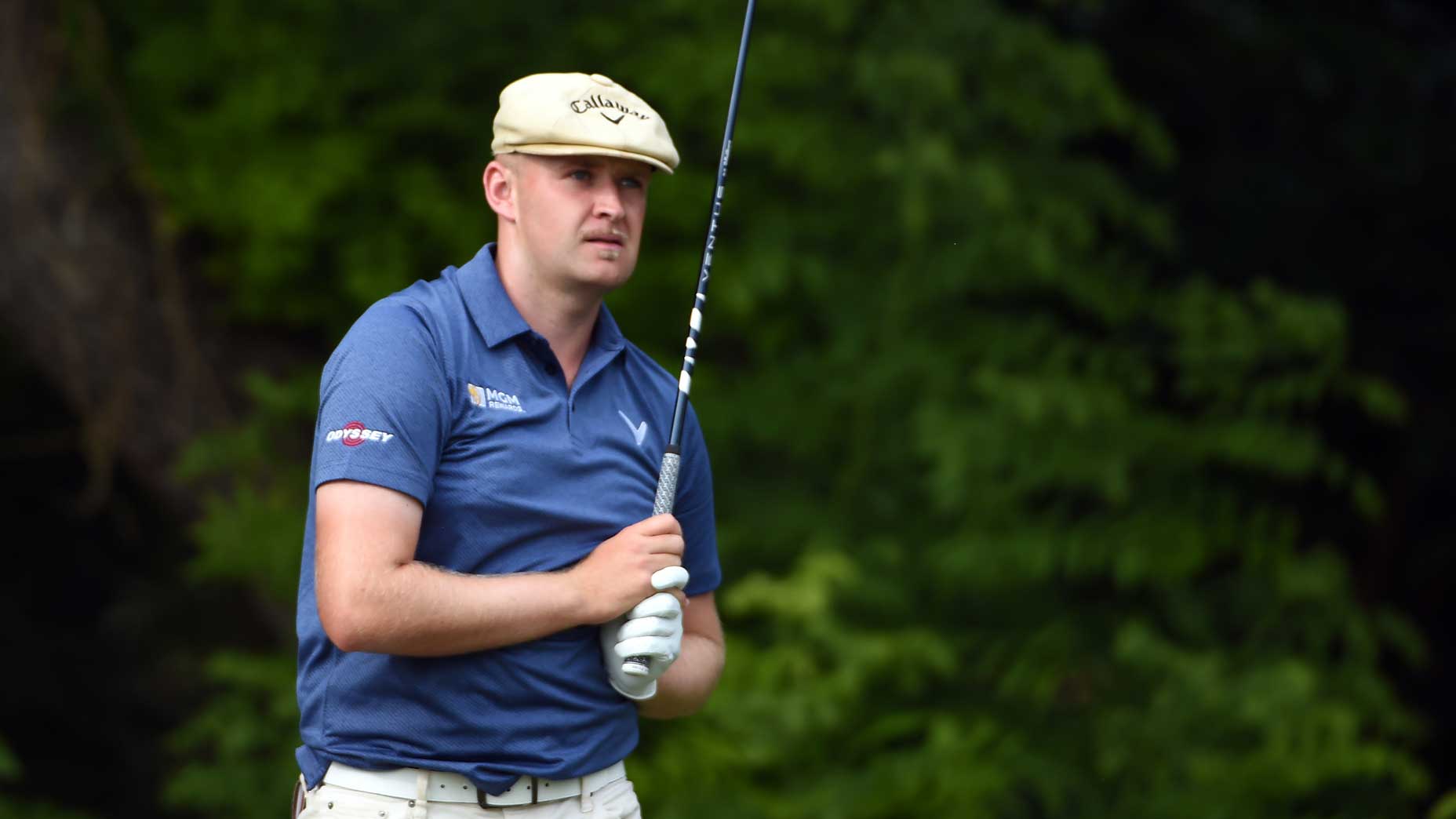There may be more questions than answers this week for casual golf fans watching the Charles Schwab Challenge from their living rooms. Who’s that guy with a three-shot lead? Where’d he come from? Why does he wear that funny hat?
The answers, in order, are Harry Hall, from England. And as for his hat, well, it’s not an ode to Bryson DeChambeau. It’s not an ode to Ben Hogan, who wore something very similar. It’s an ode to Jim Barnes, an Englishman who won four majors in the 1910s and 20s. You’ve got to do your research to find all of that, because Hall’s Wikipedia entry is just 21 words long.
Now that we’ve explained who will be on your television screen all weekend, perhaps an explanation of what he’s doing there.
Hall carved out a three-shot lead through two rounds of this week’s Tour event, reaching 12 under after going 62-66 for the first 36 holes. He’s a PGA Tour rookie, competing in just his 26th career event. He’s amassed 12 made cuts and a pair of top 10s, but zero top-5 finishes.
In other words? He has never really been in contention. And the two times he’s finished in the top 10, they came at this year’s Puerto Rico Open and at the Mexico Open at Vidanta, two events with weaker-than-normal PGA Tour fields.
That means one thing more than anything else for golf viewers this weekend: a chance to watch a 25-year-old handle, stand up to, or succumb to the pressure of nerves at the highest level of pro golf. Oh, no. You’re just being dramatic, Sean! He’ll be fine!
While that may end up being true, the newness of contention already entered Hall’s brain well before he teed it up in the final pairing Saturday afternoon. It actually started much earlier than the second-half of this tournament. It arrived as early as Friday, during the second round.
“Just go back and chill out and make sure I breathe tomorrow,” Hall said Friday night about his plans. “I could tell when I started today my heart was pacing a lot more than it normally does. Yeah, just to breathe and maybe slow myself down a little bit at the start tomorrow.”
Hall opened with a blistering 62 on Thursday, the best score of his PGA Tour career by two strokes. But during his second-round 66, when he finally had to see his face and name on all the leaderboards across the property, that’s when his play started to sink in.
“Knowing the position I was in. That made me nervous,” Hall said, displaying some lovely honesty that elite players are so rare to admit.
“Well, I didn’t think about it, but I can sense it, and I think I can sense that people around me know it. But it wasn’t like I was uncomfortable. It was just something I have to get better at dealing with. I think I dealt with it good in the end.”
He was one over par through the first five holes of Friday’s second round before blitzing the rest of the course again with six birdies over his final 13 holes. So yes, we’d say he dealt with it good in the end. That said, he has only just reached halftime. There are two quarters left. And he’s well aware of it. Seizing on the opportunity to talk nerves with one of the best golfers on the planet, a reporter asked a simple question next:
How are you going to manage those nerves on the weekend?
What Hall responded with was a very healthy outlook on the situation. What he’s preparing to experience is just a greater version of the tiny nerves that exist elsewhere in pro golf, and in life.
“Well, you have to manage nerves for the rest of your life,” he said. “They never go away. All the little tools that I’ve created in the last few years of professional golf, they’ll probably be escalated and there will be new challenges tomorrow, and you’ve got to accept that.
“I think no matter who you are, you’re always going to have different challenges to face on a daily basis, and mine tomorrow will be being in the final group, a position I’ve never been in before, and I’m excited for it.”










